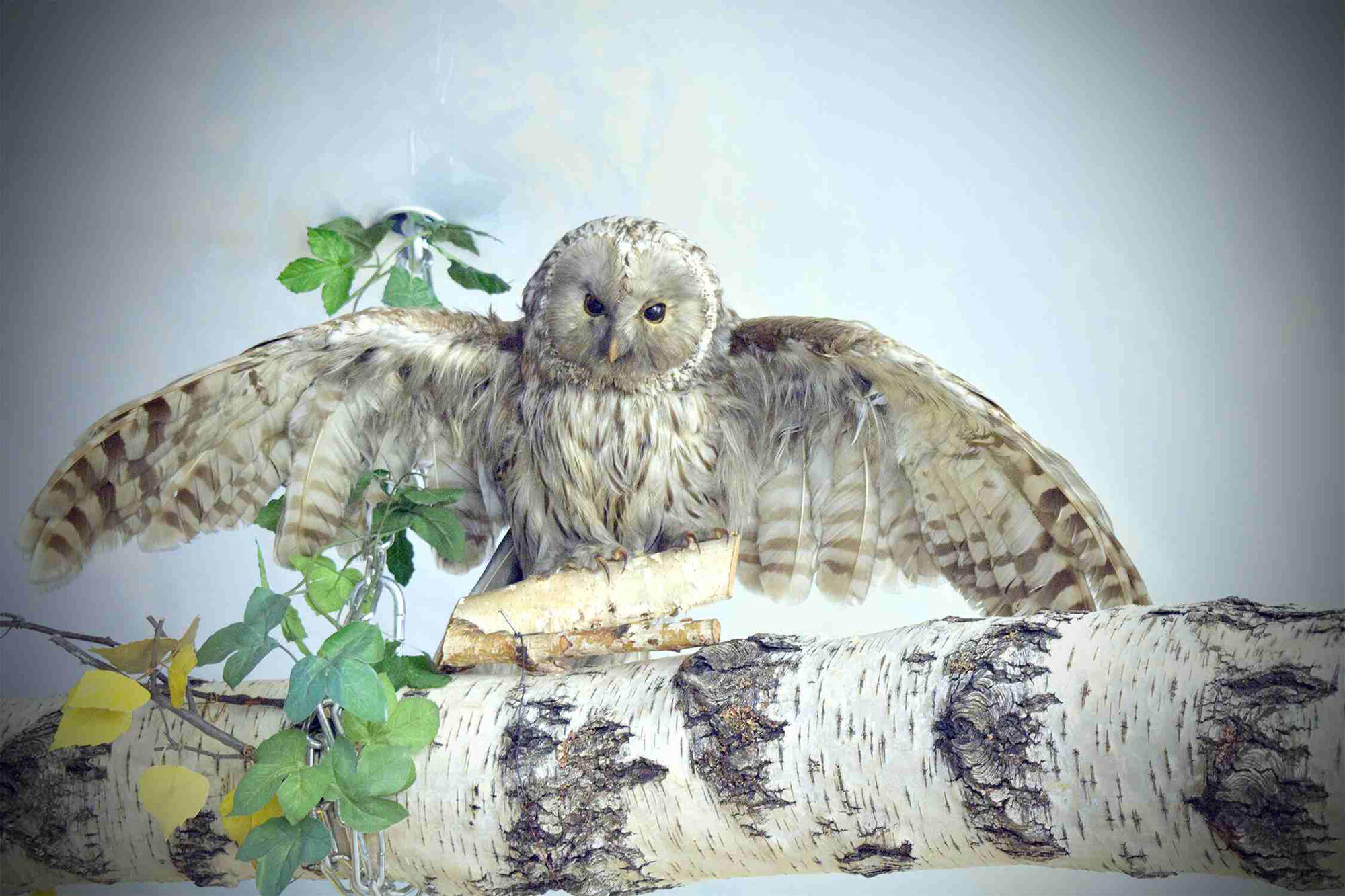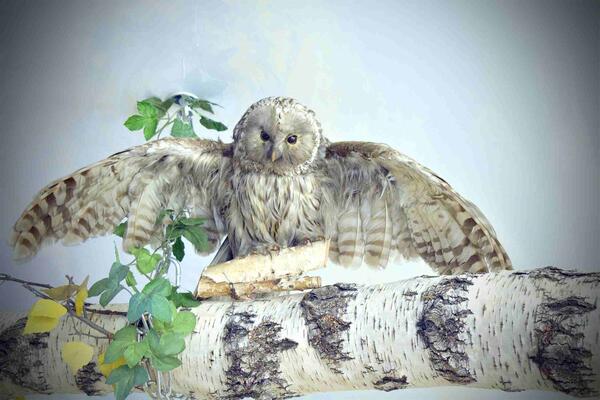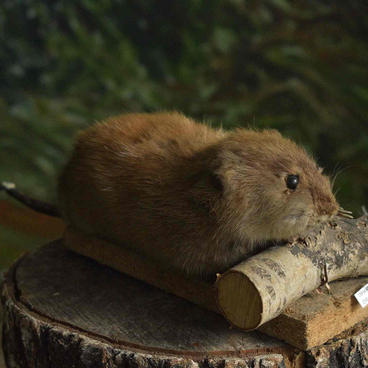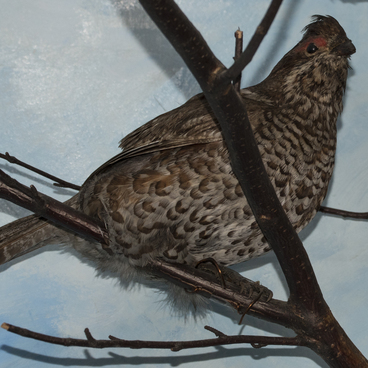The tawny owl is a predatory nocturnal bird from the owl family. The oldest remains of wood owls found by paleontologists come from the late Pleistocene epoch, i.e. there is evidence that they lived approximately 600,000 years ago.
The brown owl is one of the smallest owls, it is, on average, 35-40 centimeters in length, and its weight does not exceed 600 to 700 grams. This bird does not have ear tufts, an important characteristic that distinguishes it from many other types of owls. It does, however, have large ear openings covered by movable folds of skin. The beak is positioned quite high up on the face, and its sides are noticeably pressed in. The tawny owl’s plumage may have a grey to a distinct orange hue, frequently with dark chestnut spots.
Its feathers are soft. Brown owls are very fluffy, which is why these birds look much bigger than they actually are in reality. Since these predators hunt in the dark, they mainly rely on their hearing, which is excellent, fortunately enough. The way its wings are positioned does not allow this bird to fly as quickly as diurnal predators, such as falcons and hawks, or to perform complex aerobatics.
The tawny owl sticks to its territory, i.e. the bird lives where it was born. Even if it moves away from the place of its birth, usually to a location not too far away, this happens only because conditions in that territory have worsened. Brown owls inhabit deciduous, coniferous or mixed forests. In fact, it cannot be said that they are very picky about their environment. Sometimes, these birds can even live in towns or cities, preferring trees of parks, or unused attics.
Their primary diet consists of mice, squirrels, lizards, frogs, small and average-sized birds, such as black or hazel grouse, insects, arthropods and fish. These predators start hunting when it is dark. They attentively listen out for and register every sound. Even quiet and far away noises do not escape their ears. Tawny owls estimate the size of their prey by ear. And if it is suitable, i.e. sufficiently small, they go and hide so as not to scare the potential victim with the sound of their wings. If the bird grows suspicious of something, it observes in silence and tries not to give away its location. If the brown owl decides that the danger is real, it leaves noiselessly or goes on the offensive if its offspring need protection. These predators rarely make any sounds, but, at dusk, they do sometimes call out to each other. These birds also start preparing for their hunt at that time. They may fly around beforehand, typically close to the ground. During such flights, they are searching for potential prey.
Their lifespans are not very long and average around 5 years. Brown owls often live in pairs. They can also choose to do so in bigger groups, but still keep their distance from each other, otherwise there may not be enough food to go around.
Large birds of prey pose a threat to tawny owls, i.e. eagles, hawks and golden eagles.
The brown owl is one of the smallest owls, it is, on average, 35-40 centimeters in length, and its weight does not exceed 600 to 700 grams. This bird does not have ear tufts, an important characteristic that distinguishes it from many other types of owls. It does, however, have large ear openings covered by movable folds of skin. The beak is positioned quite high up on the face, and its sides are noticeably pressed in. The tawny owl’s plumage may have a grey to a distinct orange hue, frequently with dark chestnut spots.
Its feathers are soft. Brown owls are very fluffy, which is why these birds look much bigger than they actually are in reality. Since these predators hunt in the dark, they mainly rely on their hearing, which is excellent, fortunately enough. The way its wings are positioned does not allow this bird to fly as quickly as diurnal predators, such as falcons and hawks, or to perform complex aerobatics.
The tawny owl sticks to its territory, i.e. the bird lives where it was born. Even if it moves away from the place of its birth, usually to a location not too far away, this happens only because conditions in that territory have worsened. Brown owls inhabit deciduous, coniferous or mixed forests. In fact, it cannot be said that they are very picky about their environment. Sometimes, these birds can even live in towns or cities, preferring trees of parks, or unused attics.
Their primary diet consists of mice, squirrels, lizards, frogs, small and average-sized birds, such as black or hazel grouse, insects, arthropods and fish. These predators start hunting when it is dark. They attentively listen out for and register every sound. Even quiet and far away noises do not escape their ears. Tawny owls estimate the size of their prey by ear. And if it is suitable, i.e. sufficiently small, they go and hide so as not to scare the potential victim with the sound of their wings. If the bird grows suspicious of something, it observes in silence and tries not to give away its location. If the brown owl decides that the danger is real, it leaves noiselessly or goes on the offensive if its offspring need protection. These predators rarely make any sounds, but, at dusk, they do sometimes call out to each other. These birds also start preparing for their hunt at that time. They may fly around beforehand, typically close to the ground. During such flights, they are searching for potential prey.
Their lifespans are not very long and average around 5 years. Brown owls often live in pairs. They can also choose to do so in bigger groups, but still keep their distance from each other, otherwise there may not be enough food to go around.
Large birds of prey pose a threat to tawny owls, i.e. eagles, hawks and golden eagles.



